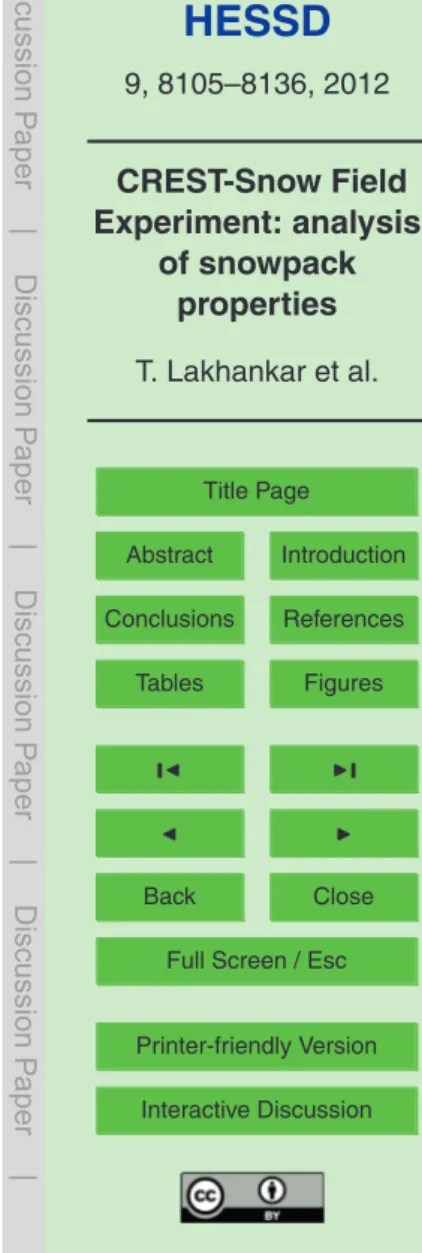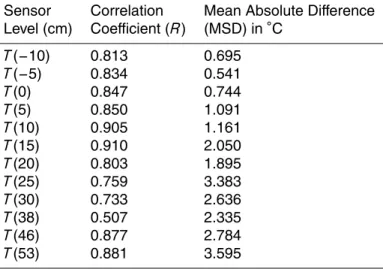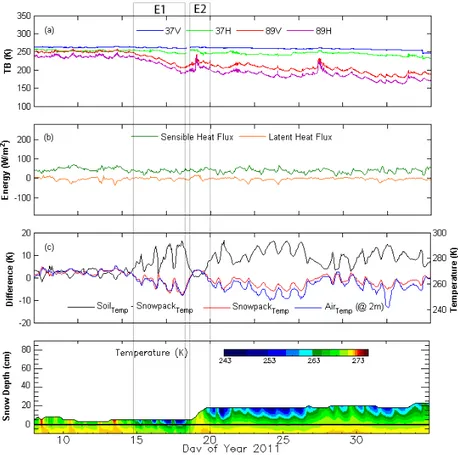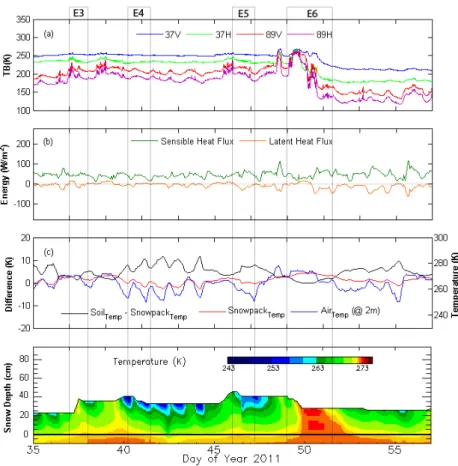CREST-Snow Field Experiment: analysis of snowpack properties using multi-frequency microwave remote sensing data
Texto
Imagem




Documentos relacionados
The sensible and latent heat flux was calculated for daytime and nighttime using the monthly mean surface water temperature derived from MODIS data.. Due to the complexity of
This mechanistic model simulates the energy fluxes (sensible, latent heat and net radiation) at three levels (atmosphere, canopy and soil) using only air temperature, relative
The values of latent heat flux (LE) and sensible heat flux (H) followed the distributions of rainfall, stored soil water and LAI (Figures 1D-F); in periods with low soil
The OSEB and SEBAL models were used to estimate the partition of net radiation ( Rn ) into the components latent heat flux (LE), sensible heat flux (H), and ground heat flux
Diurnal variability from 1 to 4 January 2010: (a) wind speed at 3 m (black line), air temperature at 1 m (blue line) and surface temperature of snow (red line), (b) NO mixing ratios
of snow ablation including net solar radiation, turbulent flux exchange of sensible and latent heat and the e ff ect of local advection of sensible heat. We investigate the ap-
soil moisture, soil temperature, net radiation and heat fluxes (latent, sensible and ground heat fluxes) at land surface. Temperature and moisture of the surface 2.5 cm soil
How to fuse all kinds of snow information (snow depth measurements from meteorological stations and derived from passive microwave sensors, and MODIS SCA products) to produce snow





